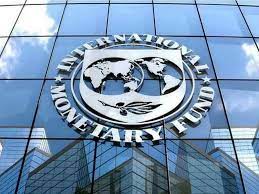According to the IMF’s latest projections, India’s economy is expected to grow at 6.6 per cent in 2026, maintaining its lead among large economies.
New Delhi: India’s economy continues to expand at a rapid pace, driven by strong domestic consumption, robust manufacturing, and steady growth in the services sector, economists said on Sunday.
They said the latest data from the International Monetary Fund (IMF) presents an encouraging outlook for the country — reinforcing its position as the world’s fastest-growing major economy.
According to the IMF’s latest projections, India’s economy is expected to grow at 6.6 per cent in 2026, maintaining its lead among large economies.
In contrast, China’s growth rate is forecast to slow to 4.8 per cent during the same period.
Commenting on the IMF’s report, Dr. Manoranjan Sharma, Chief Economist at Infomerics Ratings, said, “The IMF figures have been released, and they are very positive and encouraging. India’s growth rate in 2026 is expected to be 6.6 per cent, while China’s will be only 4.8 per cent.”
“This steady growth can be attributed to three key drivers — rising domestic consumption, a revival in manufacturing, and strong performance in the services sector,” he said.
Dr. Sharma added that India’s economy is expanding at a time when global growth is slowing down.
The IMF estimates that the world economy, which grew at 3.3 per cent in 2024, will moderate to 3.2 per cent in 2025 and 3.1 per cent in 2026.
The slowdown has been partly attributed to tariff measures introduced by US President Donald Trump, which have disrupted global trade flows.
The IMF’s ‘World Economic Outlook’ report projects that advanced economies will grow by just 1.6 per cent, while developing economies are expected to expand by 4.2 per cent.
The US economy is forecast to grow at 1.9 per cent, down from 2.4 per cent in 2024, while Spain is expected to be the fastest-growing advanced economy at 2.9 per cent.
The report also highlights that China’s economic momentum is weakening due to structural challenges, including demographic shifts, high debt levels, and continued pressure in the real estate sector.
In contrast, India’s growth story is underpinned by structural reforms, steady consumption growth, and major investments in infrastructure.
Economists believe India’s sustained momentum enhances its attractiveness for foreign direct investment (FDI) and portfolio inflows, strengthening its global economic standing and geopolitical influence.
However, they caution that the country must now translate this growth into inclusive development.
“India must seize this opportunity to accelerate job creation, reduce poverty, and invest in infrastructure, education, and healthcare,” Dr. Sharma noted.
“The next few years will be critical for turning growth into long-term gains — through higher productivity, better labour absorption, and a focus on skill development,” he added.
According to a report by SBI Capital Markets (SBICAPS),India’s economy is expected to maintain steady growth in the second half of the current financial year (H2 FY26), supported by strong domestic consumption despite global uncertainties,
The report said that while trade tensions and high tariffs continue to challenge global growth, India’s internal demand remains a key stabilising force.
With the United States imposing steep 50 per cent tariffs on Indian exports, policymakers are increasingly focusing on boosting domestic growth drivers.
Both the central and state governments have stepped up capital spending in FY26 so far, which is expected to reflect in higher investment levels across the economy.
Recognising the importance of domestic consumption, recent GST rate changes were aligned with the festive season to encourage spending.
The Confederation of All India Traders (CAIT) has projected that festive sales could reach a record Rs 4.75 trillion this year.
Early signs of this momentum are visible in auto retail sales, which recorded strong growth during the Navaratri season.
Globally, the SBICAPS report described trade conditions as uncertain, calling tariffs the “new abnormal.”
Chinese exports to the US fell by 33 per cent in August 2025 compared to the previous year, but overall exports rose by 4.4 per cent, indicating a rerouting of supply chains rather than a full-scale disruption.
Exporters and retailers have so far managed to absorb inflationary pressures, though consumers are gradually beginning to feel the pinch.
The report also pointed to a shifting global financial landscape, noting that central banks now hold more gold than US Treasuries for the first time in three decades.
While no strong alternative to the dollar has yet emerged, growing interest in the Chinese yuan and digital currencies signals an ongoing search for new monetary anchors.
However, SBICAPS warned that the global rush to rebalance investments could create asset bubbles.
Artificial intelligence has become the latest hotspot for investors, with massive capital inflows despite unproven business models.
IANS

